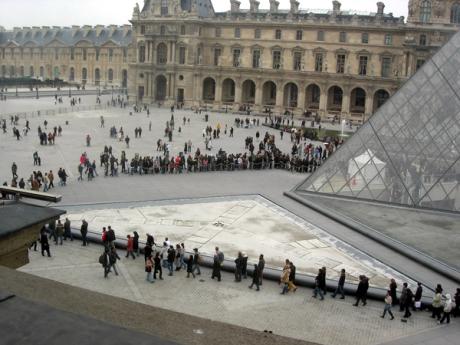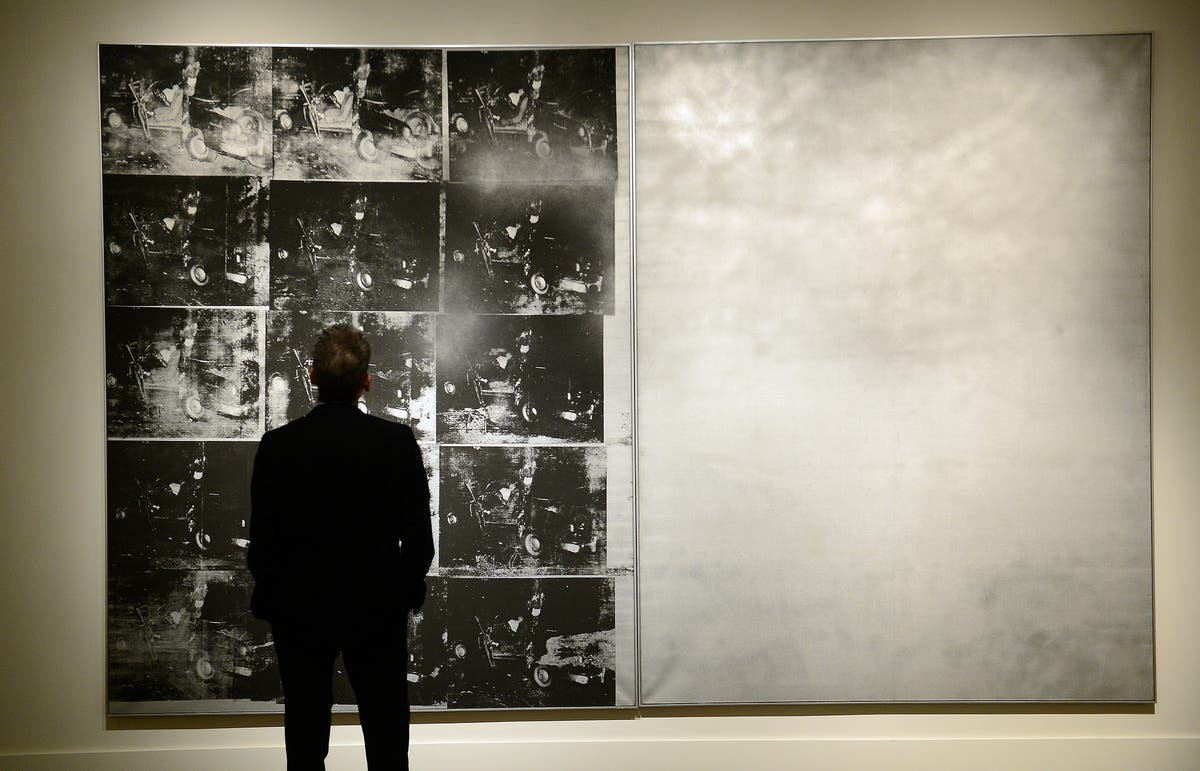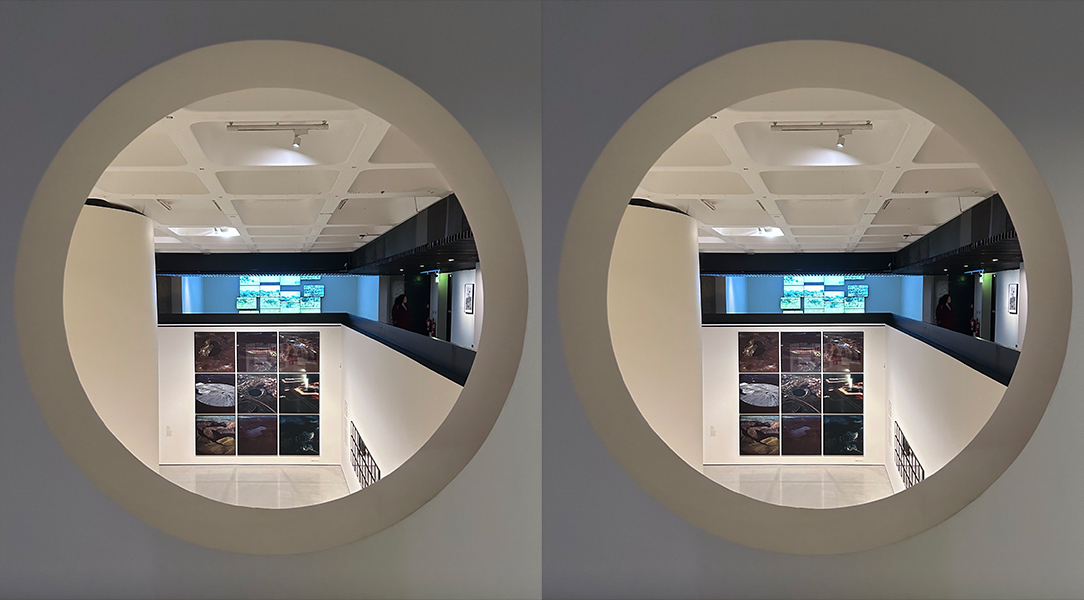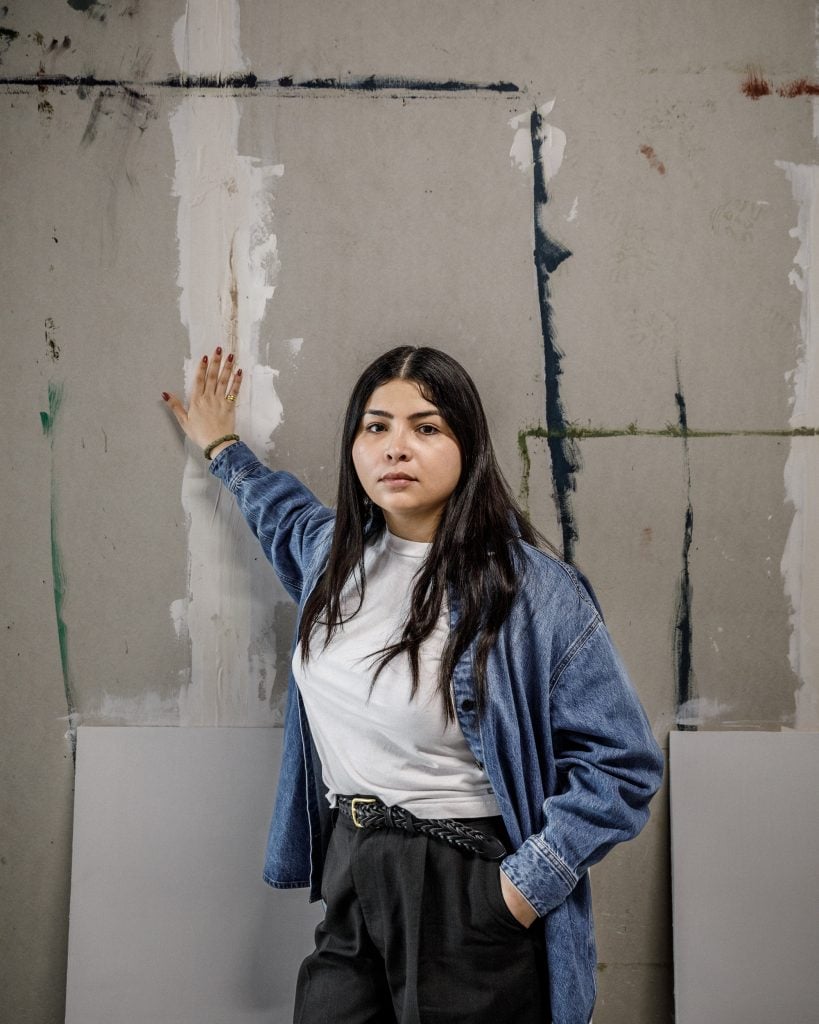Monelle
2017 - Film & Video (Film & Video)
13:53 minutes (looped)
Diego Marcon
Monelle by Diego Marcon was filmed at night inside the infamous Casa del Fascio, the headquarters of the local Fascist Party in Como Italy, designed by Giuseppe Terragni under Mussolini’s rule. The building is immersed in darkness and it is initially difficult to recognize the iconic rationalist architecture, flashes of light illuminate languid adolescent girls sleeping amidst the space for just a few seconds at a time. Next to the bodies, strange humanoids are lurking, they are CGI-generated, but the human eye does not have enough time to register their artificiality, they materialize and disappear in a flash like ghosts. Marcon filmed the piece in 35mm using the old recycled equipment of an Italian animation studio, the film explores what form oppression can take and how a place contains vestiges of past violence. This video is usually projected alone in a dark room in exhibitions or in movie theaters and strong sense of danger traverses the full film echoing the dark current political situation in Italy that sees the emergence of neo-fascist movements and a populist glorification of Mussolini, from street gangs to the highest levels of government. The film relies on the double notion of the cinematic shot and the act of violence, bathing us between the single frames in the scary unknown of obscure black.
Diego Marcon uses film, video and installation to investigate the ontology of the moving image, focusing on the relationship between reality and representation. This theoretical approach is used to address more popular forms of image such as horror, slapstick comedy and cartoons. Exaggerating and multiplying the tropes of these genres, his work takes on an uncanny dimension. He addresses historical realities, memory and politics, drawing on analogue film archives which provide him with a basis for a study on the construction of emotions. His characters are often young and melancholy and inhabit the worlds that he creates through the synthesis of old techniques with more recent digital technologies.
Colors:
Related works sharing similar palette

© » KADIST
Leslie Shows
Human Quarry is a large work on paper by Leslie Shows made of a combination of acrylic paint and collage...

© » HYPERALLERGIC
7 Art Shows to See in New York, February 2024 Skip to content A detail of Apollinaria Broche’s “I Close My Eyes Then I Drift Away” (2023) at Marianne Boesky Gallery (photo Hrag Vartanian/ Hyperallergic ) The short month of February still packs a lot of art in New York City, from a survey of the influential Godzilla Asian American Arts Network to Apollinaria Broche’s whimsical ceramics and Aki Sasamoto’s experimentations with snail shells and Magic Erasers in her solo show at the Queens Museum...

© » KADIST
Asli Çavusoglu
2020In the exhibition Pink as a Cabbage / Green as an Onion / Blue as an Orange , Asli Çavusoglu pursues her work on color to delve into an investigation into alternative agricultural systems and natural dyes made with fruits, vegetables, and plants cultivated by the farming initiatives she has been in touch with...

© » KADIST
Christopher Badger
2011Drowned Wood Standing Coiled (2011) consists of two sculptures, inextricably linked...

© » KADIST
Michael Rakowitz
2017The Ballad of Special Ops Cody by Michael Rakowitz is a serio-comic stop motion animated film in which an everyday African-American G...

© » SLASH PARIS
Romain Best — Coulissements par frictions — Frac île-de-france, le Plateau — Exposition — Slash Paris Connexion Newsletter Twitter Facebook Romain Best — Coulissements par frictions — Frac île-de-france, le Plateau — Exposition — Slash Paris Français English Accueil Événements Artistes Lieux Magazine Vidéos Retour Romain Best — Coulissements par frictions Exposition Installations, sculpture, techniques mixtes Romain Best, Coulissements par frictions, 2023 © Romain Best Romain Best Coulissements par frictions Encore 27 jours : 9 novembre 2023 → 7 janvier 2024 Présenté dans la Project Room du Plateau, Romain Best est né en 1995 à Lyon...

© » KADIST
Aurélien Froment
2008dbqp is a photographic series in which the artist handles an enlargement of the plate with three cutout windows which was used for L’Archipel (The Archipelago) in collaboration with Pierre Leguillon...

© » THEARTNEWSPER
Louvre raises ticket prices by 30% in Olympics year Art market Museums & heritage Exhibitions Books Podcasts Columns Technology Adventures with Van Gogh Search Search Museums & Heritage news Louvre raises ticket prices by 30% in Olympics year The price increase will help to subsidise free entry for some visitors and regulate crowd size Gareth Harris 12 December 2023 Share The museum's last ticket raise occurred in 2017 Photo: Inge Knoff via Flickr The Musée du Louvre in Paris is increasing its basic ticket price from €17 to €22 from 15 January as part of a plan to support free admission programmes for some visitors...












